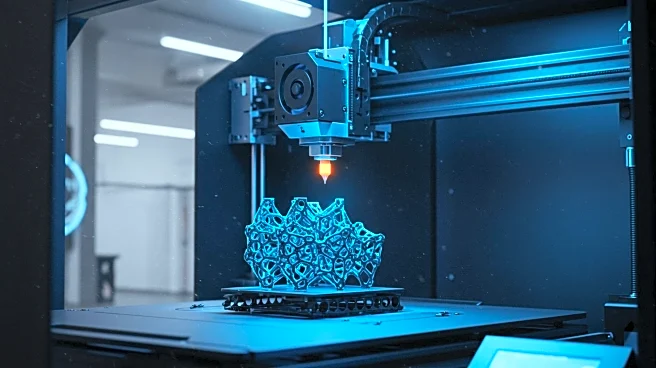What's Happening?
NASA has unveiled a new superalloy, GRX-810, which is 3D printable and capable of withstanding temperatures up to 2000°F. This development is significant in the field of advanced materials and additive manufacturing. The alloy's unique nanoparticle oxide dispersion strengthening method increases its creep rupture life by a thousand-fold, making it highly durable. GRX-810's ability to maintain integrity under extreme thermal conditions reduces the need for frequent replacements and maintenance. Additionally, the alloy is recyclable, allowing for the reuse of its powder post-3D printing while retaining its robust properties, thus promoting sustainability in high-tech manufacturing.
Why It's Important?
The introduction of GRX-810 represents a major advancement in materials science, particularly for industries that require components to endure high temperatures, such as aerospace and automotive sectors. The durability and recyclability of this superalloy could lead to significant cost savings and environmental benefits by reducing material waste and extending the lifespan of components. This innovation aligns with global trends towards sustainable manufacturing practices and could influence policy-making to support further research and collaboration between public and private sectors in developing advanced materials.
What's Next?
As GRX-810 becomes more widely adopted, it is likely to spur further research into similar high-performance materials. Industries that rely on high-temperature components may begin integrating this superalloy into their manufacturing processes, potentially leading to new applications and efficiencies. Additionally, other countries may look to NASA's model of innovation and collaboration as a framework for their own advancements in materials science and additive manufacturing.
Beyond the Headlines
The development of GRX-810 also highlights the growing importance of sustainability in manufacturing. By enabling the recycling of alloy powder, NASA is setting a precedent for eco-friendly practices in high-tech industries. This could lead to broader adoption of sustainable methods across various sectors, encouraging a shift towards more environmentally responsible production processes.











